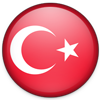United States
Tel: (877) 300-8988
Fax: (877) 664-5450
Email: info@alzinnovation.com
Greece
Tel: (877) 300-8988
Email: info@alzinnovation.com
Turkey
Tel: 0216 57526660216 5757937
staskale@bayindirhastanesi.com.tr
Mailing Address:
Ali Nihat Tarlan Cad. Ertaş Sok.
No: 17 İçerenköy – Ataşehir / İSTANBUL
Singapore
Tel: (877) 300-8988
Email: info@alzinnovation.com
Memory Nurture (Australia)
Call: 0402 943 053
Email: info@memorynurture.com
Website: www.memorynurture.com
Canada
Tel: (877) 300-8988
Fax: (877) 664-5450
Email: info@alzinnovation.com
Yes Virginia, There is Hope for Alzheimer's Patients!
Ashby Memory Method / Cognitive Retention Therapy Overview — Part 1
One out of three people in Canada is directly or indirectly affected by Alzheimer’s Disease or dementia, yet, until now, the medical community has been able to offer them very little hope.
Now a Calgary-based health research company has unveiled a cognitive retention therapy that could change the way we think about—and treat—Alzheimer’s: not as a curable disease, but as one in which we can actually reverse some of the decline and roll back symptoms experienced by patients through brain therapy.
The Ashby Memory Method is a scientifically-designed brain fitness program designed to rebuild memory pathways in people with memory loss, dementia or first and second stage Alzheimer’s.
This program is a breakthrough discovery that can provide very immediate benefits to the 450,000 Canadians whose lives are being short-changed by Alzheimer’s, dementia, or memory loss, as well as their families.
As Gayle Burrows, a former RN working as a caregiver in Vancouver says: “I can finally say ‘Yes! There is something we can do to help. The Ashby Memory Method works!’ It is exciting!!” Field trials with 50 patients have shown a 12–14% improvement in the memory after using the brain exercise program for one year. And these are folks who were already showing memory loss—with an average memory score (using the standardized Mini Mental State Exam) of 20 out of 30.
The research of Dr. Mira Ashby, who won the Order of Canada for her work with the brain injured, has been developed by her son, John Ashby into the Ashby Memory Method. It is a natural progression of the scientifically-designed therapies—now standard treatment—for brain-injured victims of car collisions, workplace accidents and stroke patients. What is new is that it works against Alzheimer’s and dementia. It is the only treatment or therapy that has shown real, measurable improvement in quantitative mental tests and more importantly, in the quality of life people enjoy—outstripping the primarily symptom-easing benefits of medications. Some family members describe it as “bringing them back.”
This non-drug intervention does not interfere with medication, and it can be done in a hospital (to ameliorate post-operative dementia), seniors’ residence or at home. The caregiver works with the participant twice a week on a scientifically-designed series of exercises that come in a book format (easily accepted by seniors).
The implications for the program are extremely significant to the estimated 3.5 million patients in North America personally affected by Alzheimer’s and the millions more who are directly involved in providing care to their spouse or parent. Findings suggest that in addition to improving memory, this targeted intervention program has the potential to maintain people’s functional abilities much longer, building on the known connection between higher MMSE scores and people’s increased ability to perform activities of daily living such as grooming, dressing, household chores, and keeping appointments. This discovery promises to extend their independence, delay a move to institutional care by several years, or reduce caregiver burden. It also promises to improve the all-important quality of life and save the public health care system millions of dollars in facility costs.
In conclusion, the Ashby Memory Method may be one of the important therapeutic breakthroughs to emerge in the field of Alzheimer’s treatment in recent years.
Learn more by visiting www.alzinnovation.com or calling 1-877-300-8988
Source: CGNA Newsletter, Volume 25 No.1 Summer 2008 http://www.cgna.net/uploads/Volume25_1.pdf

















